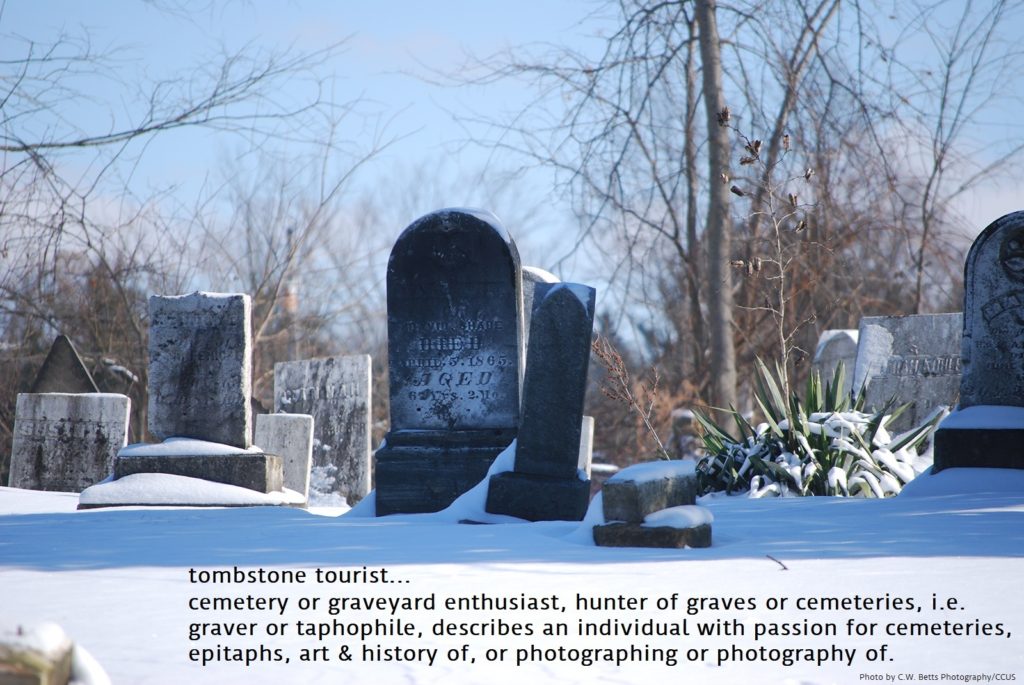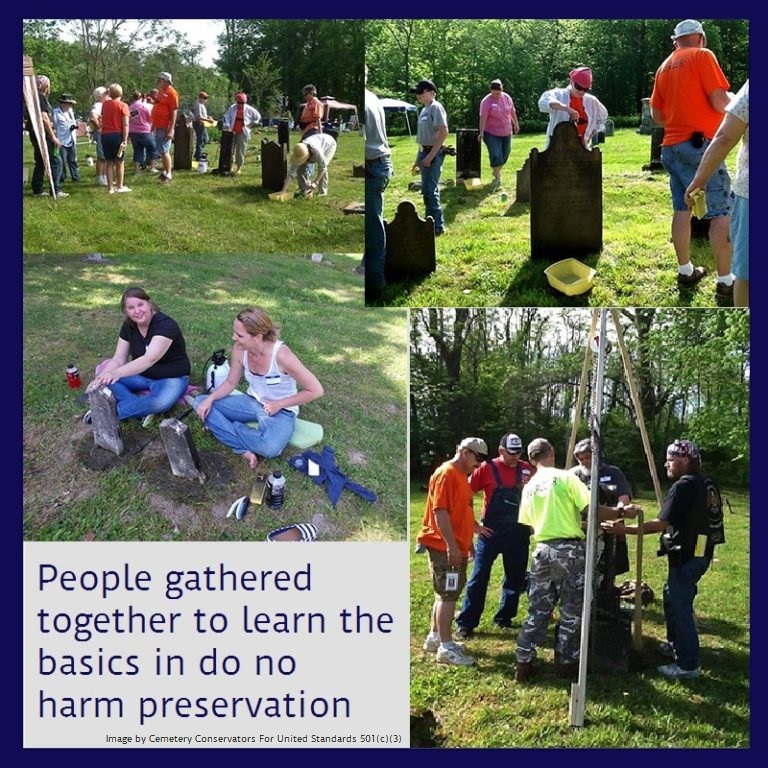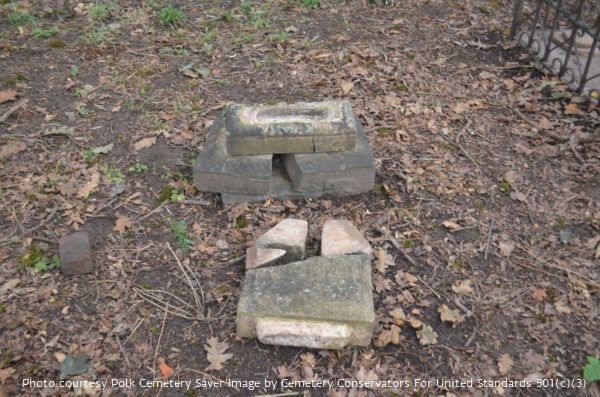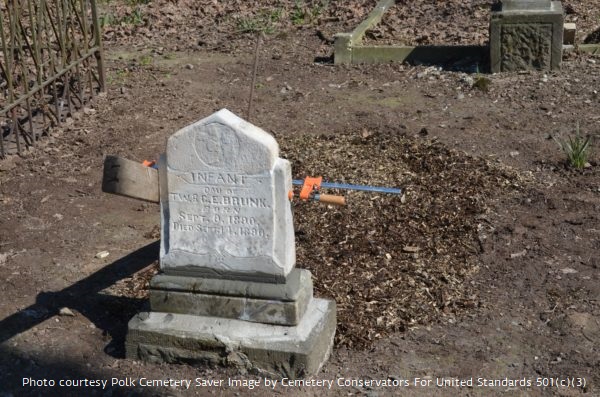Who We Are
Welcome to who we are. This part of our site describes and explains the who, what, when, where, why, and how that has brought us together. From arriving at techniques and methods and how they have been collected, to the criteria used in choosing them, to the goals that make them understandable and accessible for everyone.
This is a relatively young field, and though we all have some variance in technique, we all agree on “Do No Harm” methods.

We are a group of people from across the country that have always had a deep interest in cemeteries. We seem to share most all of the same thoughts and feelings of reverence, history, peacefulness, beauty, and appreciation for art and architecture, as many of you do. All here are tombstone tourists of one degree or another. These are the things that led us to becoming conservators who preserve our cemeteries. This is our first commonality. In all actually this groups origins began almost 10 years ago with a handful of people trying to learn all they could about cemetery preservation. The information was scant and the training could be few and far between and sometimes sketchy at best. Needless to say there was then as is now, good professional do no harm information and training, and some really harmful information and training. Learning to know the difference was the first and steepest of these mountains to climb. Some of these harmful methods were easy to see through as harmful and others were more difficult and would undertake chemistry and geology to see clearly.
This original handful of people quickly found themselves embroiled in many heated discussions over some of the most blatantly destructive methods like using bleach and wire brushes for cleaning grave markers. And while those battles raged a new front opened up to battle the things that needed science to prove or disprove where products are concerned. And so the hunt for vetted and verified information was on. Then a fantastic thing began to happen along the way. This handful of people were finding more and more likeminded people from across the country as they continued this journey. Now more experience and knowledge was being gathered with a growing chorus of voices that was now beginning to turn the tide on the disinformation replacing it with factual information. At that point this group of conservators took the step to organize and collaborate on their collective knowledge and began contributing it to one website. This is what makes the CCUS a collective of individual contributing conservators


When it comes to sources, there are several good organizations with some preservation type standards and strongly suggested techniques and methods. Many of which we have sited on this webpage by direct quote or link. They are the foundation for what we practice, teach, and pass on to you. Many of these places can become confusing to navigate due to rearrangements on their site, rearrangement of materials or removal of materials. Other sites can be weak in their suggestions or have no to little explanation of the subject. Our goal is to put all of the best information under one umbrella in an easy to find place and make it understandable with good explanations. We will do our utmost to dispel the myths concerning harmful methods, in comparison to the truths about harmless methods.
We have combined this expert knowledge to develop some basic standards for preservation. This is not to say that these are the only standards. They are quite simply a combination of the best and most basic techniques and methods from across the board that most preservationists and groups seem to agree on. Where some groups and conservators have become extremely finite and particular, we have decided to give these practices some latitude. This gives us all some breathing room, option, and choice.
When deciding on these practices, we judge them on two simple basic criteria’s. Are they done in a no harm manner? Can the work be performed and done in the most non-permanent manner to accept better technology down the road? Other important criteria such as, keeping with historical character, symmetry, flora and fauna, and other cemetery related things, are also important. But these are subject to what is allowed in any given cemetery. We can certainly give opinion and advice on these aspects. But the rules and conditions that dictate them are too broad to address with a set of standards.
Our goal is to address the most basic preservation and restoration issues that make up the majority of what most try to accomplish. These beginning steps are the most important. And usually decide whether the project will begin with success or meet with permanent damage. Being a cemetery conservator does not happen overnight and we all continue to learn new things. But at the same time, anyone can become proficient in the basics with some knowledge, skill, training and practice. Nothing can take the place of good hands-on experience and this site has not been constructed to replace that experience. Rather this site was constructed for the reasons we’ve described above and serves as an introduction and guide to good cemetery preservation and as an informative place to begin. We are here to help you with that. We care a great deal about preserving our cemeteries and the history that is unique to them. We want your experience with preservation to be a safe, productive, and long lasting one. We also want it to be easy to understand and affordable. It’s your unique experience to learn from and enjoy.




REPAIR VERSUS RESTORATION
Some have called the work done on cemeteries “restoration”. In a way this is partially correct. However, restoration is returning something to its’ original condition. In cemetery conservation we attempt to repair the headstones as best as possible. They will probably not be as beautiful as the original. With the many broken headstones we will find, the best we can do is repair them and attempt to make the engraving readable through the repair material. The goal is to do the best repair as possible without doing any more harm to the headstones, and getting them into a condition that will allow them to be upright as they were originally. Repair or restoration? Who really knows? The repair in the pictures below is an example. Some call it a repair. Some have called it a restoration. When I repaired this grave marker, I just wanted it to be intact, readable, and stand at the head of the infants’ grave. I accomplished that so I was satisfied. Whether it is repair or restoration is a moot point. You should always strive to be satisfied with the work you do at cemeteries whether it is just cleaning or repair and restoration. The definition of the difference should not deter you from doing the best job you can do.
Lloyd Collins
What Good Preservation Look Like


